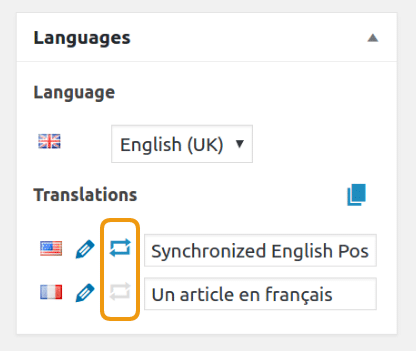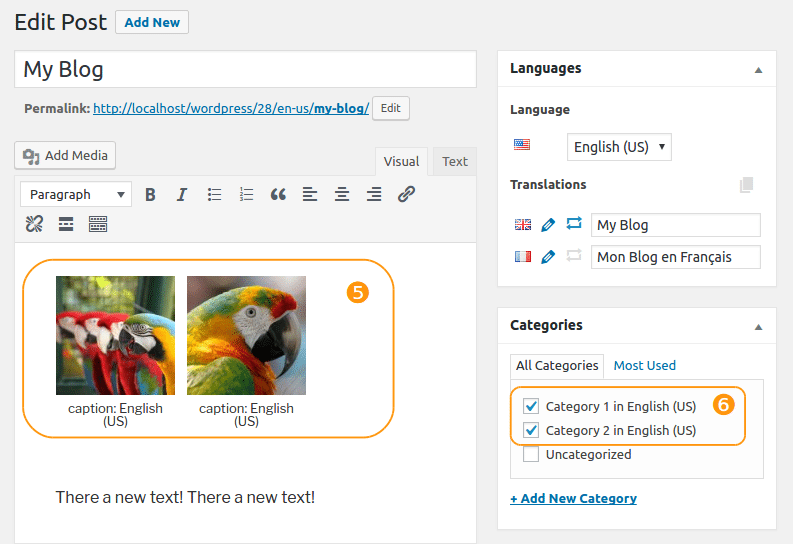Synchronized posts
Polylang Pro
This feature, available only in Polylang Pro, allows you to have a post (or page) appear the same in several languages and to propagate a modification across the translations. This is especially useful for multiregional websites. Everything is synchronized (title, content, taxonomy terms, custom fields…) whatever the choices made in the Polylang synchronization settings.
You can activate the synchronization by clicking on the icon in the Languages metabox. The icon will turn to blue (depending on your admin theme). This choice means that the post synchronization is now activated for a specific post and a specific set of languages. Saving the post propagates your modifications across the “translations”. The post in the other language is automatically created if it does not exist yet.
In the picture below, the English (UK) and English (US) posts are synchronized, while the French post is independently translated. You can deactivate the synchronization by clicking on the same icon again.

The feature is compatible with translated taxonomies. It means that two synchronized posts could display different taxonomy terms if these terms are translations of each other. The feature is also compatible with the automatically translated gallery shortcode and with ACF Pro fields which are automatically translated (image, file, post object, gallery and relationship fields).
Let’s illustrate what happens with taxonomies and galleries. We have intentionally translated ❹ categories with different names in English (US) and in English (UK). We have also previously uploaded and translated ❷ two pictures, giving them different captions in English (US) and in English (UK). However, we want to keep the ❸ text the same between the two posts in English. The post’s synchronization is activated for ❶ English (US) and English (UK).

As you can see below, the English (US) post contains the same title and text as the English (UK) post. ❺ The gallery has been synchronized too. But since we chose to use different captions, the post displays English (US) captions instead of original English (UK) captions. Note that if you did not previously translated your media, Polylang will create them for you.
Polylang chose to use ❻ the categories in English (US). These categories must have been previously created as translations of the corresponding English (UK) categories. We chose a different name for the example, but you can of course use the same name and same slug for the translated categories.
